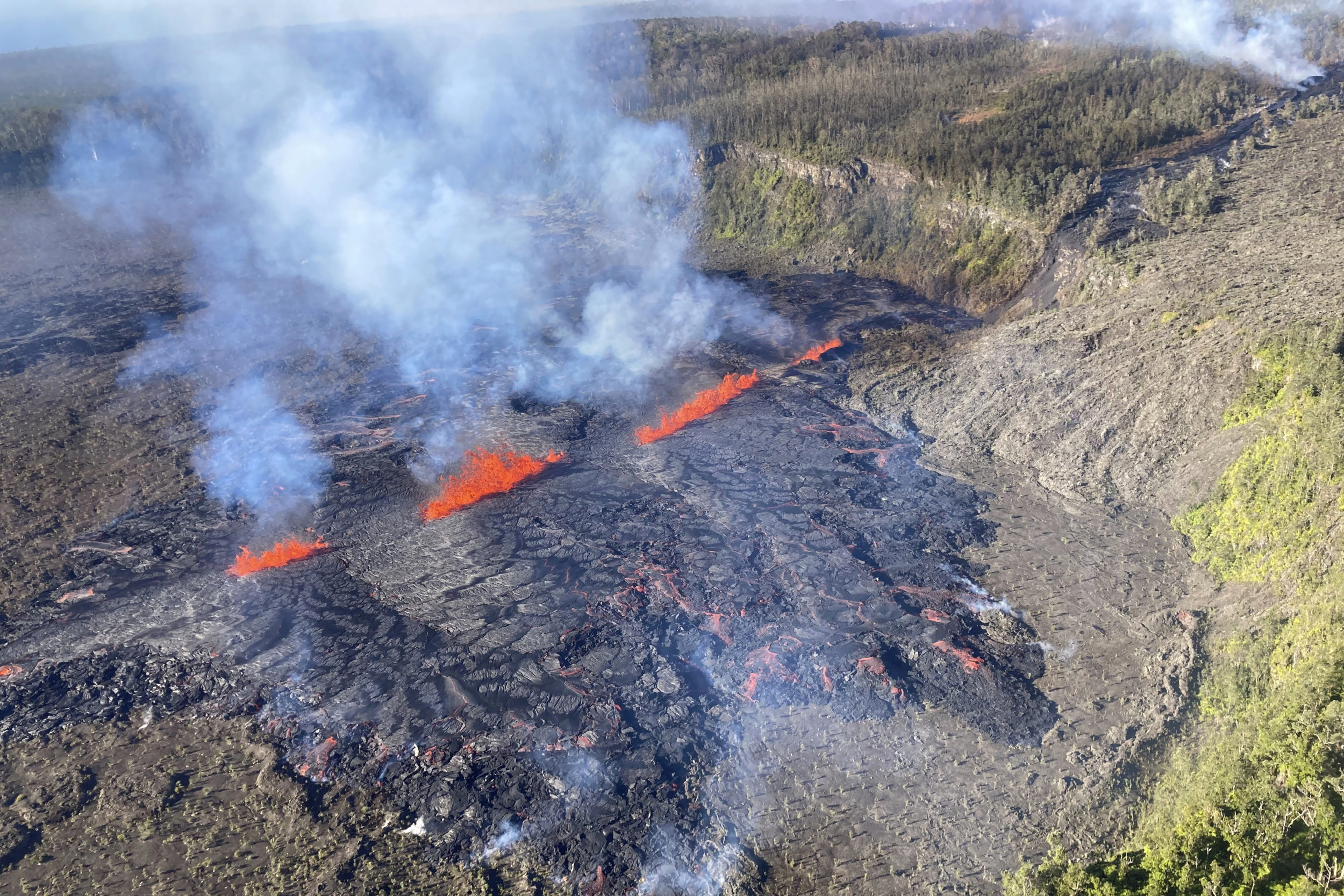Kilauea Volcano in Hawaii has made headlines once again with a fresh eruption this week in a remote area of Hawaii Volcanoes National Park, leading officials to issue gas warnings.
The volcano erupted briefly on Sunday night in a section currently off-limits to visitors, with activity picking up again Monday evening, as confirmed by the U.S. Geological Survey’s Hawaiian Volcano Observatory.
By Tuesday, the activity had intensified, but officials reassured that there was no immediate risk to neighboring homes or infrastructure.
According to the observatory, “Kīlauea volcano is currently erupting in Hawai’i Volcanoes National Park from a new fissure vent that opened within Nāpau Crater early this morning. Eruptive activity resumed following a brief eruption that began on September 15.” The second phase of this eruption kicked off around 6 PM the previous night.
The Hawaiian Volcano Observatory also issued a warning about “vog,” or volcanic gas, which could be blown to other parts of the park by wind. Residents in nearby areas may notice varying levels of volcanic gas emissions in the coming days.

According to the observatory, high amounts of volcanic gas—including water vapor (H2O) and sulfur dioxide (SO2)—are typically released during eruptions, potentially impacting air quality downwind. “Vog can pose health risks, damage crops, and affect livestock,” they noted.
The park features two of the world’s most active volcanoes, Kilauea and Mauna Loa, but due to the eruption’s distance (over six miles from the nearest road), public viewing is not an option.
Geologists conducted a helicopter survey Tuesday morning and reported active lava flows and eruptive fissures in Nāpau Crater. The Volcano Alert Level remains at WATCH/ORANGE, with no significant changes detected in other areas.
The Hawaiian Volcano Observatory is keeping a close eye on the situation and will provide updates regularly, issuing alerts should volcanic activity dramatically change.
This article includes reporting from the Associated Press.
